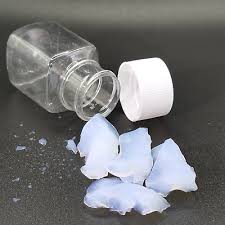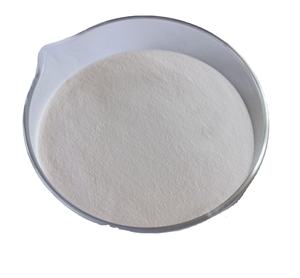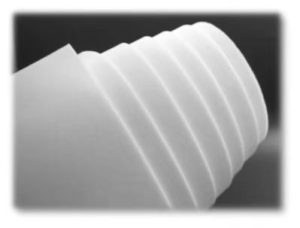Professional industry ceramic supplier, silicon nitride, silicon carbide, aluminum nitride and any other kinds of ceramics.
1. Introduction
Just 36 hours ago, aerospace giant Stellar Dynamics unveiled a new generation of reusable rocket nozzles forged from a titanium-aluminum-niobium superalloy that can withstand temperatures exceeding 1,600°C without warping. The secret behind this breakthrough? It wasn’t just the alloy—it was the container it was melted in: a high-purity silicon carbide crucible. While most people picture crucibles as dusty lab relics, the modern silicon carbide crucible is a precision-engineered marvel enabling cutting-edge advancements from orbital launch systems to next-gen nuclear reactors.

Unlike your average kitchenware (yes, there are silicon carbide ceramic dinner plates out there—more on that later), industrial silicon carbide crucibles operate in environments where a single impurity can ruin millions of dollars’ worth of material. Let’s dive into why this advanced ceramic is the MVP of extreme metallurgy.
2. Why Silicon Carbide? The Material That Laughs at Heat
Silicon carbide (SiC) isn’t just tough—it’s borderline indestructible under thermal stress. With a melting point around 2,700°C and exceptional thermal shock resistance, it outperforms traditional alumina (Al2O3) and even zirconia crucibles in many high-temperature applications. Plus, it’s chemically inert to most molten metals, including titanium, nickel-based superalloys, and rare earth elements.
Compare that to boron carbide vs silicon carbide: while boron carbide (B4C) wins in hardness and neutron absorption (great for armor and nuclear shielding), it’s far more reactive with molten metals and harder to fabricate into complex shapes like crucibles. Silicon carbide strikes the perfect balance—durability, purity, and manufacturability.
3. The Niche Application: Melting Reactive Alloys for Spaceflight

3.1. The Problem with Reactive Metals
Titanium, zirconium, and certain superalloys are notoriously reactive when molten. They’ll happily snatch oxygen, nitrogen, or carbon from almost any container—alumina crucibles included—leading to embrittlement and catastrophic failure in flight-critical parts. Enter the silicon carbide crucible: its covalent bonding structure resists decomposition, and high-purity grades minimize contamination.
3.2. Real-World Impact: Reusable Rocket Engines
In the Stellar Dynamics announcement, engineers revealed they used custom silicon carbide crucibles to cast turbine blades for their new Raptor-X engine. These crucibles ensured zero oxygen pickup during melting—a non-negotiable for parts that cycle from cryogenic fuel temps to white-hot combustion in minutes. One engineer joked, ‘If our crucible fails, the rocket fails. No pressure.’
4. Beyond Crucibles: The Silicon Carbide Ecosystem

While the crucible steals the spotlight, it’s part of a broader family of silicon carbide components enabling extreme environments:
- silicon carbide ceramic tiles for thermal protection systems
- rbsic silicon carbide tile blocks for furnace linings
- silicon carbide burner nozzles in high-efficiency industrial heaters
- silicon carbide thermocouple protection tubes for accurate temperature monitoring
- silicon carbide ceramic tubes for high-temperature gas handling
Interestingly, some of these components—like silicon carbide ceramic columns or silicon carbide rings—are machined from the same dense, sintered blanks used for crucibles, showcasing the material’s versatility.
5. Silicon Nitride: The Friendly Rival
Don’t sleep on silicon nitride (Si3N4), though. While silicon carbide dominates in oxidation resistance and thermal conductivity, silicon nitride offers superior fracture toughness and is preferred in applications requiring impact resistance—like custom silicon nitride heat shields or silicon nitride ceramic bearings.
Factories producing silicon nitride crucibles are fewer, and the high purity silicon nitride powder market remains tight. Still, for non-oxidizing, high-shock environments, Si3N4 shines. Think of it as the agile ninja to SiC’s tank-like warrior.
6. Wait—What About Silicon Carbide Dinnerware?
Yes, you read that right. Amid all this aerospace talk, there’s a quirky consumer offshoot: silicon carbide ceramic baking dishes, butter dishes, and even Christmas plates. Brands like Staub have experimented with silicon carbide-enhanced ceramics for superior heat retention. But let’s be clear—your silicon carbide ceramic casserole dish with lid won’t survive a rocket launch. These are decorative or culinary novelties, not industrial-grade.
Similarly, silicon carbide ceramic plates for painting or silicon carbide black ceramic plates are aesthetic applications leveraging the material’s hardness and gloss, not its refractory properties. Fun? Absolutely. Relevant to crucible performance? Not really.
7. Conclusion
The silicon carbide crucible may never grace your dinner table (unless you’re into avant-garde tableware), but it’s quietly enabling humanity’s boldest engineering feats. From reusable rockets to compact fusion reactors, this advanced ceramic ensures that when we melt the future, we don’t contaminate it. So next time you hear about a breakthrough in space tech, tip your hat—not to the alloy, but to the humble crucible that held it together.
Our Website founded on October 17, 2012, is a high-tech enterprise committed to the research and development, production, processing, sales and technical services of ceramic relative materials such as Silicon. Our products includes but not limited to Boron Carbide Ceramic Products, Boron Nitride Ceramic Products, Silicon Carbide Ceramic Products, Silicon Nitride Ceramic Products, Zirconium Dioxide Ceramic Products, etc. If you are interested, please feel free to contact us.




